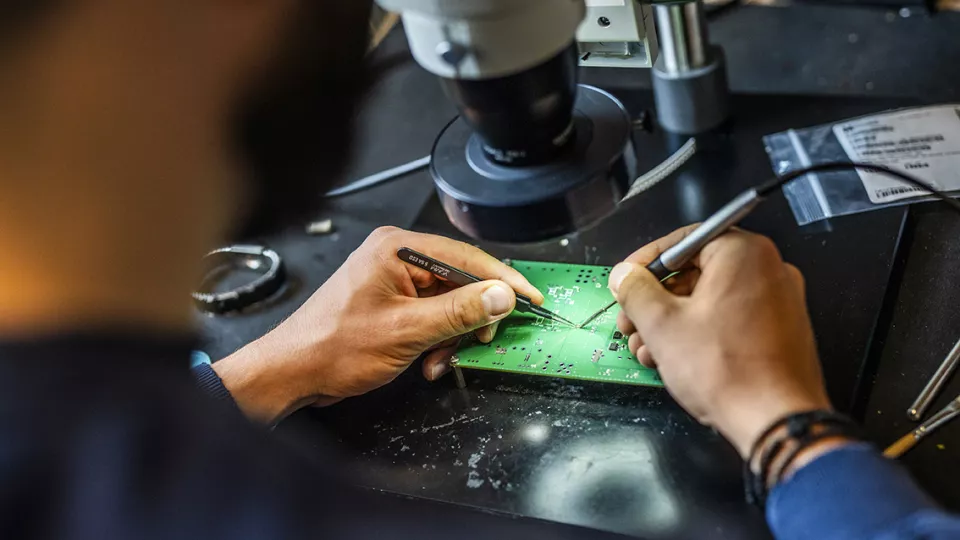Semiconductor ecosystem to be strengthened
The Swedish Agency for Economic and Regional Growth – Tillväxtverket – allocates SEK 12 million from the European Regional Development Fund to Lund Nano Lab (Myfab Lund). Over the next four years, the money will strengthen cooperation between academia and industry in the field of semiconductors, and lower the threshold to the lab for companies.
Evelina Lindén – Published 6 February 2025

Anneli Löfgren, deputy director of NanoLund, will be the overall project manager and will be responsible for reporting and communicating with the Swedish Agency for Economic and Regional Growth. Luke Hankin, Head of Laboratory, will lead the development work.
“To increase the use of the lab and increase the competitiveness of companies, it is important that we can offer good support and service to companies. We want to develop better procedures for receiving new customers, to be able to offer that our staff can perform manufacturing and characterization in the lab. The project will lead to increased knowledge among companies, better support and quality, and eventually to establishing a new lab at Science Village that offers higher technology readiness levels,” says Anneli Löfgren.
“Working with sustainability and minimising the climate impact of our operations is also a key effort to make the new lab an appealing choice for companies in the region,” she adds.
Strengthening the research infrastructure
Lund Nano Lab is part of the national research infrastructure Myfab, which also involves cleanroom laboratories in Gothenburg, Stockholm, and Uppsala. The call clearly aims to strengthen the research infrastructure in the semiconductor field and increase collaboration within the semiconductor ecosystem.
In the statement of reasons for its decision, the Swedish Agency for Economic and Regional Growth writes that the project will be able to take advantage of synergies with the newly formed Swedish Chips Competence Center (SCCC) and thus contribute to the EU’s goal of strengthening the semiconductor area to ensure the competitiveness of companies. The project also contributes to Skåne’s specialisation areas of Advanced Materials and Manufacturing, ESS, MAX IV and Science Village and Tech.
The Structural Fund partnership believes that the project is very well in line with Skåne’s strategy for innovation in the semiconductor area and is relevant to Blekinge through its potential to strengthen the regional innovation system in advanced technology, which can spread to Blekinge. It also emphasises the great strategic relevance of the issue at the national and European level. Through broad collaboration between academia, industry, and various research centers, a strong platform for regional development is created in Skåne, and synergies can be created with other national and international initiatives in semiconductor technology.
The European Regional Development Fund is allocating a total of approximately SEK 64 million to five regional projects in Sweden to strengthen the innovation system for the Swedish and European semiconductor industry.
The Swedish Agency for Economic and Regional Growth
Tillväxtverket, The Swedish Agency for Economic and Regional Growth, strengthens companies, municipalities, and regions to ensure competetive companies and sustainable development in all parts of Sweden.
